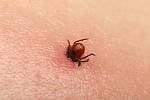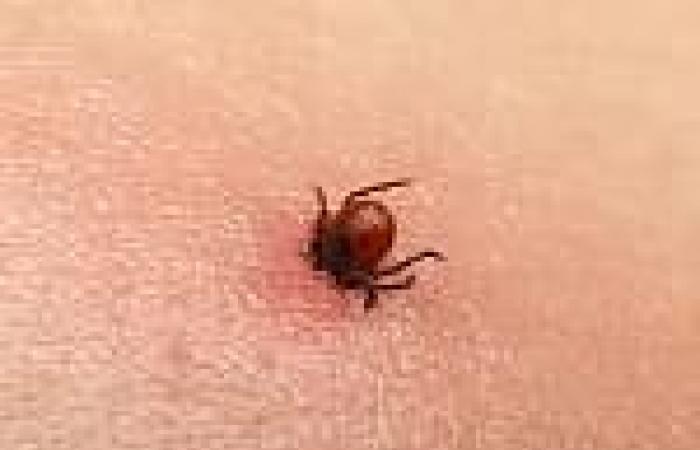Tips for properly removing a stuck tick and opinions on them differ. Some people pull the tick out, others twist it out with a twisting motion, others twist it out with tweezers or a special card. However, there is only one ideal procedure to remove a bitten tick. And it is also approved by health professionals. Find out once and for all how to minimize the risk of infection with Lyme disease and tick-borne encephalitis. We will also look at why ticks should never be soaped or oiled.
The longer the tick is attached, the higher the risk of infection.
| Photo: Shutterstock
There is constant uncertainty among people about the best way to remove an attached tick. Therefore, they often turn to the Emergency Medical Service with their questions; either directly on line 155 or in private messages on social networks. They are not sure how to deal with the tick and at the same time minimize the risk of infection with tick-borne encephalitis or Lyme disease.
How to safely remove a tick? A string, a spoon and a straw will help. The parasite does not burn
However, removing ticks is not a science. However, some of the earlier recommended advice and practices are not exactly appropriate. So what is the only correct way to remove a tick bite? And which one is the worst? You may be surprised to learn that although it has been recommended for years, it can do a lot of damage.
Watch a demonstration of how to properly pull out a tick:
Source: Youtube
Speed is important
It often happens that you discover the tick already at the moment when it is crawling on you and just trying to penetrate your skin. At such a moment, ideally remove it from the skin, wrap it in a handkerchief and burn it. However, if you are on a walk far from home and discover a tick already bitten, act as quickly as possible. The risk of infection increases with each additional minute that the tick is attached.
“If a tick is infected, it does not necessarily mean that the infection will be transmitted to the host. An important role is played, among other things, by the time for which the tick is a guest on you,” points out the importance of quick removal by a specialist in testing infected ticks on the Tick prevention website.
“If you remove the tick within 24 hours, the risk of Lyme disease transmission is reduced. In tick-borne encephalitis, the infection often takes place after only a few hours,” the server specifies.
The most important thing you should know about ticks:
Timely removal of the tick is also essential to reduce the risk of transmission of infection, according to the expert website Tick. He even advises that if the tick cannot be removed in any other way, use sharp tweezers. Grasp the tick close to the skin and pull it out.
However, if you are in ideal conditions and you discover a tick in the evening while showering, for example, the following procedure is recommended. Even among experts, it is considered the least risky.
How to remove a tick
The moment you notice that a common tick is feeding on your body, you need to act quickly. Ideally, however, wash and disinfect your hands carefully before removing the tick. If you can use hygienic rubber gloves, do so.
Then follow the instructions shared by the Medical Rescue Service on social networks:
How to quickly remove a tick? Don’t worry about the rest of the mandibles, something else is more important
- Coat the tick with a disinfectant solution or gel to quickly immobilize and kill ticks.
- Take a wet one cotton swab, textile, disinfected tweezers or a special hook designed to pull out the tick. Rocking movements from side to side remove the tick. Never pull or turn the tick!
- Removal tick with this safe method it can take up to 3 minutes. Therefore, do not give up after the first minute that you cannot remove the tick.
- After pulling out place they suck disinfect and watch to see if it ignites. But this can happen even after 14 days. After that, you need to contact a doctor immediately.
- Tick after pulling out, wrap in toilet paper and flush down the toilet or incinerate.
- If they stay in the morning mandiblesno need to panic. They do not transmit the infection further and the body deals with them in the same way as with a splinter.
Advice from the Ambulance Service:
“Do not apply oil, soapy water, etc. to the tick and its surroundings. The tick may be vomited into the host’s blood, which increases the risk of infection,” warns ZZS.
Beware of transmission of infection
The National Health and Information Portal (NZIP) spoke about the high risk of transmission of infection with an infected tick via its Instagram profile @nzip.cz.
“These tiny parasites transmit infectious diseases such as tick-borne encephalitis or Lyme disease. That’s why we don’t touch the tick with our bare hands. Use tweezers, a glove, or a napkin.”
Pediatrician Soňa Šuláková also pointed out via social media @dite_a_ja.official that you need to be very careful when handling ticks.

Help in the fight against ticks. The tick will show where they are and where there is a risk of infection
“Be careful not to crush the tick when removing it. It is definitely not advisable to crush or crush the tick due to the risk of transmission of infection. Afterwards, use disinfectant again and wash your hands after removing the tick,” adds Soňa Šuláková.
Which methods to avoid
Also pay attention to one of the previously most widespread methods, which is no longer recommended today. In the case of removing a tick by twisting it, not only can the risk of transmission of infection increase due to vomiting of the tick, but also other problems can occur.
“The front of the tick always comes off when you try to turn it. It can remain in the skin of the affected person and cause a long-lasting induration or slight inflammation,” warns NZIP on its website.

Insidious borreliosis: It can disguise itself, a red spot is not the only warning
However, it is still necessary to bear in mind that even if you follow the recommended procedure and remove the tick in the safest way, transmission of the infection can still occur. As mentioned above, if the tick is infected, time is of the essence. It mainly depends on how quickly you notice its presence and how quickly you remove it.
We have been dealing with the topic of how to deal with annoying insects and other pests for a long time. Read more great tricks:








